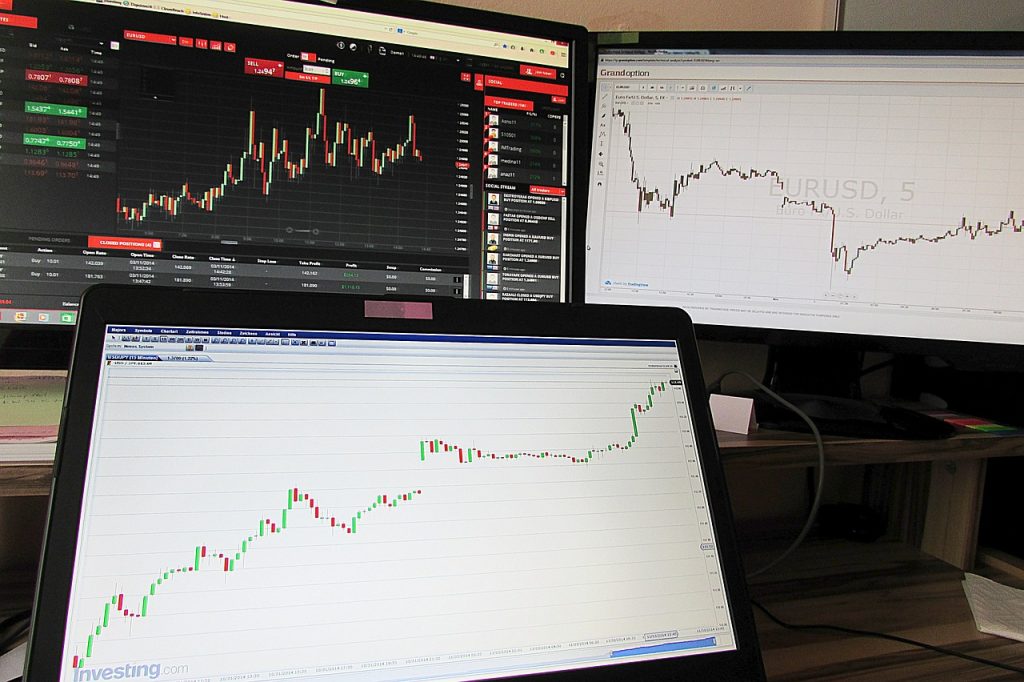In the dynamic world of financial markets, investors and traders constantly seek an edge—a way to predict future price movements and make profitable decisions. While some adhere to the principles of fundamental analysis, meticulously examining a company’s financial health and economic data, a different school of thought focuses on the charts themselves. This is the realm of technical analysis.

What is Technical Analysis?
Technical analysis is a trading and investing discipline used to evaluate securities and identify trading opportunities by analyzing statistical trends gathered from trading activity, such as price movement and volume. The core idea is that all relevant information about an asset is already reflected in its price. Therefore, by studying historical price and volume data, technical analysts, often called “technicians,” can identify patterns and trends that offer insights into future price behavior.
Unlike fundamental analysis, which seeks to determine an asset’s intrinsic value, technical analysis is not concerned with “why” a price is moving, but rather “what” the price is doing. This approach is based on three key assumptions, first put forward by Charles Dow, a pioneer of the discipline:
- Market action discounts everything: All known and perceived information about a company, including its financials, management, and market sentiment, is already priced into the security.
- Prices move in trends: Prices do not move randomly. They tend to follow discernible trends—up, down, or sideways—that persist for a period of time.
- History tends to repeat itself: The behavior of market participants, driven by emotions like fear and greed, is a predictable and cyclical force. This leads to the recurrence of identifiable price patterns on charts.
The Tools of the Trade
Technical analysis is a visual discipline, with chart patterns and mathematical indicators serving as its primary tools.
Charting: The Canvas of the Market
The most fundamental tool is the price chart. While line charts offer a simple view of closing prices, candlestick charts are the preferred choice for most technicians. Each “candlestick” provides a wealth of information for a specific time period (e.g., a day, a week, or an hour), showing the opening, closing, high, and low prices. This visual representation provides immediate insight into market sentiment.
Technical analysts use these charts to identify chart patterns—distinctive formations that can signal a continuation or a reversal of a trend. Examples include:
- Support and Resistance: These are key price levels where buying (support) or selling (resistance) interest is strong enough to halt or reverse a price trend. When a resistance level is broken, it can often become a new support level.
- Head and Shoulders: A pattern that suggests a trend reversal, often from an uptrend to a downtrend.
- Triangles, Wedges, and Flags: These are continuation patterns that signal a pause in the current trend before it resumes.
Technical Indicators: The Quantitative Edge
Beyond chart patterns, technical analysis employs a vast array of mathematical indicators, which are calculated from price and volume data. These indicators help analysts confirm trends, measure momentum, and identify overbought or oversold conditions. They can be broadly categorized as:
- Trend Indicators: These help to confirm the direction of a trend and its strength. A common example is the Moving Average (MA), which smooths out price data to show the underlying trend.
- Momentum Indicators: These measure the speed of price movements and can signal a potential reversal. The Relative Strength Index (RSI) and the Moving Average Convergence Divergence (MACD) are popular momentum oscillators that can identify when a security is overbought (likely to fall) or oversold (likely to rise).
- Volume Indicators: Volume, or the number of shares traded, is a crucial component of technical analysis. Indicators like On-Balance Volume (OBV) can confirm the strength of a trend. A rising price on low volume may suggest a weak uptrend, while a rising price on high volume confirms strong buying interest.
Technical Analysis vs. Fundamental Analysis
The debate between technical and fundamental analysis is a long-standing one. While they are often seen as opposing viewpoints, many successful investors and traders find value in combining both.
Fundamental analysis helps an investor decide what to buy, while technical analysis helps them decide when to buy or sell. For instance, an investor might use fundamental analysis to identify a high-quality company that is undervalued, and then use technical analysis to pinpoint an optimal entry point for their trade.
The Bottom Line
Technical analysis is not a mystical art but a structured methodology based on the principles of market psychology and the study of historical data. While it is not a foolproof crystal ball—past performance is no guarantee of future results—it provides a robust framework for understanding market behavior and making informed, data-driven trading decisions. By mastering its tools and indicators, traders can navigate the complexities of financial markets with greater clarity and confidence.
more
This is a follow-up request. I will provide additional details about technical analysis.
Advanced Concepts in Technical Analysis
Beyond the foundational principles and tools, technical analysis encompasses more sophisticated concepts that allow for a deeper understanding of market dynamics.
Elliott Wave Theory
Developed by Ralph Nelson Elliott in the 1930s, the Elliott Wave Theory posits that crowd psychology and investor sentiment move in predictable cycles or “waves.” The theory identifies two primary wave types:
Corrective Waves: These waves are composed of three sub-waves and move against the larger trend. The theory suggests that by identifying these wave patterns, one can predict future price movements. However, applying the Elliott Wave Theory can be subjective, with different analysts often interpreting the same chart in various ways.
Impulse Waves: These waves are composed of five sub-waves and move in the direction of the larger trend.
Fibonacci Retracement
The Fibonacci sequence (0, 1, 1, 2, 3, 5, 8, …) is a mathematical series where each number is the sum of the two preceding ones. In technical analysis, key ratios derived from this sequence—primarily 23.6%, 38.2%, 50%, 61.8%, and 100%—are used to identify potential support and resistance levels. A Fibonacci retracement is a tool used to measure the extent of a price correction or a “pullback” within a trend. Traders often look for a price to retrace to one of these levels before continuing its original trend. The 61.8% level, also known as the “golden ratio,” is considered a particularly significant level of support or resistance.
Market Volume and Its Significance
While often overlooked, market volume is a critical component of technical analysis. It represents the number of shares or contracts traded in a security over a specific period. Volume provides a crucial confirmation of price movements.
- A strong price move (up or down) on high volume suggests that the trend is backed by significant market conviction.
- A price move on low volume suggests a lack of interest and can be a sign of a weak or unsustainable trend.
Indicators like the On-Balance Volume (OBV) accumulate or subtract volume based on whether the price closes up or down, helping to confirm trend strength. A rising OBV alongside a rising price confirms an uptrend, while a diverging OBV (e.g., rising price, falling OBV) may signal a potential reversal.
Technical Analysis in Different Market Contexts
The principles of technical analysis are universal and can be applied to virtually any liquid market, including:
- Stocks: Technical analysis is widely used by day traders and swing traders to find entry and exit points for stock trades.
- Cryptocurrencies: Due to their volatile nature and strong trend-following behavior, cryptocurrencies are often a favorite subject for technical analysts.
- Forex (Foreign Exchange): Currency pairs exhibit clear trends and patterns, making them highly suitable for technical analysis.
- Commodities: The prices of commodities like gold, oil, and silver are heavily influenced by supply and demand dynamics, which are reflected in chart patterns and indicators.
The Role of Psychology
At its core, technical analysis is the study of market psychology. The recurring patterns and trends are not random; they are a visual representation of the collective fear and greed of market participants. For example, a “head and shoulders” pattern often forms after a period of irrational exuberance (the left shoulder), followed by a cautious pullback (the head), and finally a loss of conviction (the right shoulder) before a larger sell-off. By understanding these patterns, a technical analyst can gain insight into the emotional state of the market and make more rational, less emotional decisions.
The Limitations and Criticisms of Technical Analysis
While a powerful tool, technical analysis isn’t without its critics. Understanding its limitations is crucial for any practitioner.
- The Self-Fulfilling Prophecy: Critics argue that because many traders use the same tools and indicators, the patterns they identify become “self-fulfilling prophecies.” For example, if a large number of traders place stop-loss orders just below a recognized support level, a slight dip in price can trigger a cascade of selling, confirming the support “breakout” simply because so many people acted on the same belief.
- Lagging Indicators: Many technical indicators, particularly moving averages, are lagging indicators. This means they are based on past price data and are slow to react to rapid changes in market direction. A trader using a lagging indicator may be late to a trend’s start or exit a trend well after its peak.
- Subjectivity and Ambiguity: Technical analysis is often highly subjective. Two different analysts looking at the same chart might draw different trend lines, identify different patterns, or interpret indicators in conflicting ways. This ambiguity can lead to inconsistent results and a “confirmation bias” where a trader only sees the patterns that confirm their existing market view.
- “Noise” and False Signals: Markets are rarely perfect. Noise, or random price fluctuations, can create false signals that lead to premature or incorrect trades. This is especially true in choppy or range-bound markets where clear trends are absent.
A Simple Technical Trading Strategy: The MACD Crossover
A popular and straightforward technical trading strategy involves the Moving Average Convergence Divergence (MACD) indicator. The MACD is a momentum indicator that shows the relationship between two moving averages of a security’s price.
- The MACD line is the difference between a 26-period Exponential Moving Average (EMA) and a 12-period EMA.
- The signal line is a 9-period EMA of the MACD line itself.
The core of the strategy is the crossover:
- Bullish Crossover (Buy Signal): When the MACD line crosses above the signal line, it suggests that short-term momentum is accelerating relative to long-term momentum, indicating a potential buy signal. This often occurs as an uptrend is beginning.
- Bearish Crossover (Sell Signal): When the MACD line crosses below the signal line, it indicates that short-term momentum is slowing down, suggesting a potential sell signal. This often happens as a downtrend is beginning.
Traders often use this strategy in conjunction with other indicators or a clear chart pattern to confirm the signal and reduce false positives.
The Psychological Component of Trading
Ultimately, successful technical analysis is as much about managing one’s own psychology as it is about reading charts. Two of the most common psychological traps are:
- Confirmation Bias: The tendency to seek out and interpret information that confirms one’s pre-existing beliefs. In trading, this might mean a trader only sees the bullish patterns on a chart because they are already long on a stock, while ignoring bearish signals.
- Fear of Missing Out (FOMO): The feeling of anxiety that an event is unfolding without you. This can lead to impulsive, ill-timed trades as a trader rushes into a position out of fear of losing out on a potential profit, often buying at the top of a rally.
Technical analysis provides a structured, objective framework to combat these emotional biases. By following a pre-defined plan based on chart signals and indicators, a trader can remove emotion from the decision-making process.


